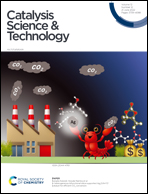Metal–organic-framework-based photocatalysts for microorganism inactivation: a review
Abstract
A metal–organic framework (MOF) is a porous coordination material composed of multidentate organic ligands and metal ions or metal clusters. Due to the designability of MOF structures, many scholars have paid attention to the interaction mechanism between metal–organic-framework-based (MOF-based) photocatalytic nanocomposite materials and microorganisms. In this review, recent progress in the photocatalytic inactivation of pathogenic microorganisms using MOF-based composite photocatalysts is summarized. The focus is on the photocatalytic removal efficiency and mechanism characteristics of MOF-based composites for bacteria, algae, and viruses. Finally, the development prospects and challenges of MOF-based composite materials in the application of photocatalytic inactivation of microorganisms are proposed. We hope this review will be helpful for designing more MOF-based composite materials with greater photocatalytic performance for the inactivation of microorganisms in the environment.



 Please wait while we load your content...
Please wait while we load your content...